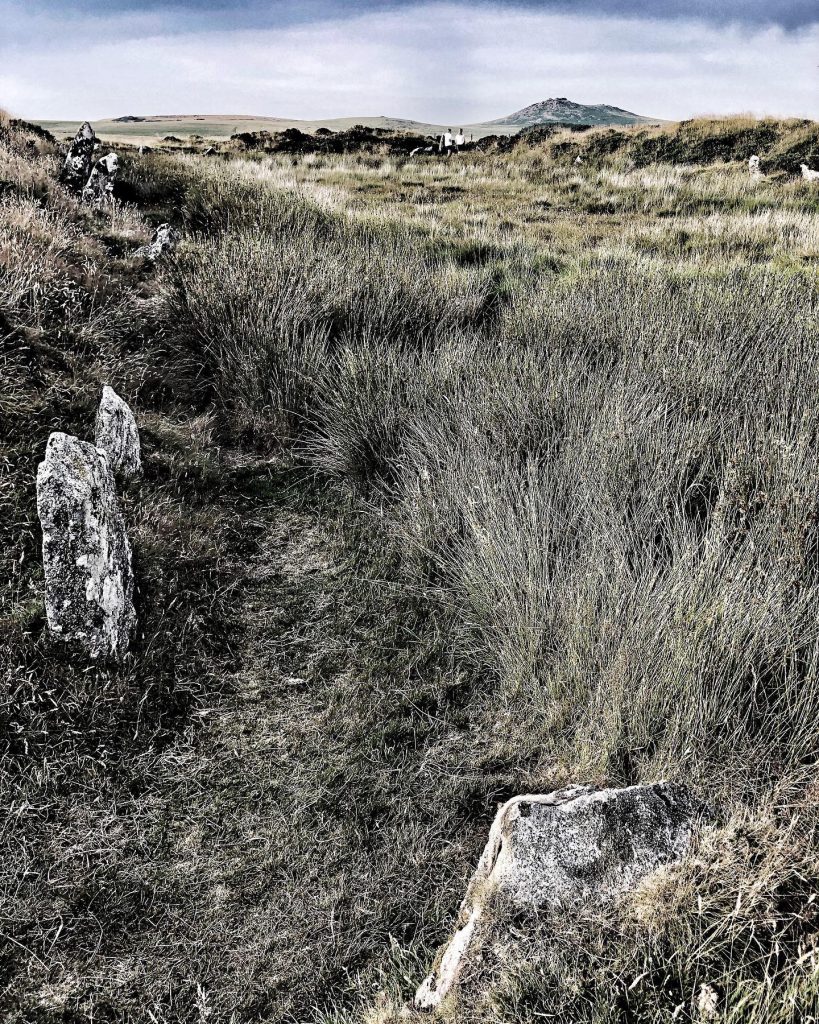king arthurs hall, king arthur’s downs, bodmin moor (SX12967765).
 west cornwall dowsers visit siteconclusions of the cornwall dowsers after visiting the site in november 2914 . as reported by roy goutté of the TimeSeekers archaeological group this large rectangular enclosure at the top of a hill with a north-south alignment, with 56 flat slab stones on the inside of the banks still visible. there appears to be an active spring, centred on the northern end which is mostly wet with reeds. with rising sphagnum moss towards the southern end. to the north-west is rough tor and brown willy with fernacre stone circle beneath them. it was not an animal pound, neither would it ‘work’ as one. It was not ‘a place for the dead’ . Its reason for being was the active spring. It was a gregarious, communal site. It was for families, not just the elders. possibly for ‘meditation’, and ‘sanctuary’. erected between 3,100-3,200 BCE. in active use for about 900 years, so, neolithic to early bronze age. on the north side, the outside banking contained a number of later cremations (iron age?) only a few on the outer south side. the settlements the site serviced were to the north, with the north east corner as the main entrance. the area of low level water was only ever ankle deep and could have to do with sun and moon reflection. with a strong september/october usage of the site, the autumn equinox sunset would be acutely visible from there. the north/south alignment meant the summer solstice could be observed, sunrise, sunset through the saddle ‘notches’ in the distant hills. other events could include the midday sun passing over the water, and the winter solstice moon. it’s purpose? possibly ceremonial- ritual- religious, and/or spiritual. also, a solstice/equinox observation site. rather magical. |